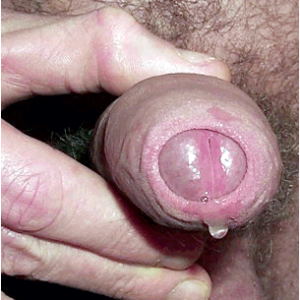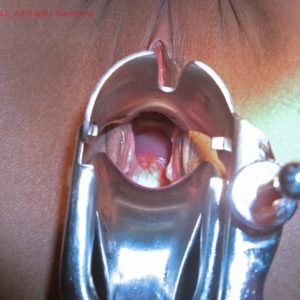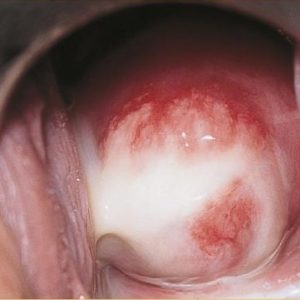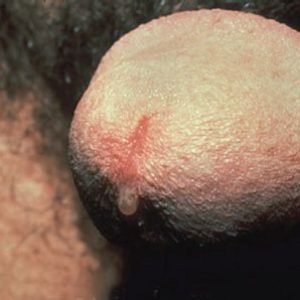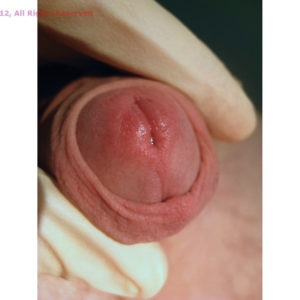Chlamydia
Chlamydia is a bacterial sexually transmitted infection (STI) that can be transmitted during unprotected vaginal, anal, or oral sex. It can infect the urethra, cervix, anus, throat, and eyes. Chlamydia is the most commonly reported bacterial STI in Australia. Most people with chlamydia do not experience symptoms or know they have it until tested. Chlamydia is easily treated with antibiotics. If left untreated, chlamydia can cause serious complications such as infertility and chronic pain.
Chlamydia is a bacterial sexually transmitted infection (STI) that can be transmitted during unprotected vaginal, anal, or oral sex. It can infect the urethra, cervix, anus, throat, and eyes. Chlamydia is the most commonly reported bacterial STI in Australia. Most people with chlamydia do not experience symptoms or know they have it until tested. Chlamydia is easily treated with antibiotics. If left untreated, chlamydia can cause serious complications such as infertility and chronic pain.
Signs and Symptoms
Chlamydia is usually asymptomatic, but if symptoms occur, it will usually be within 1 to 3 weeks of exposure. If left untreated, chlamydia can cause pelvic inflammatory disease (PID), leading to chronic pain and infertility. Untreated chlamydia can also cause pain and swelling in one or both testicles. Chlamydia is also known to cause other complications, such as arthritis.
Vagina/Vulva
Chlamydia is commonly asymptomatic. If signs or symptoms are present, there may be:
- Yellowish-white vaginal discharge
- Increased vaginal discharge
- Pain or burning sensation when you pee
- Pelvic pain, especially during sex
- Irregular bleeding, especially between periods or after sex
Penis
Chlamydia often presents no symptoms at all. If signs or symptoms are present, there may be:
- Watery, sticky or milky discharge
- Redness at the opening of the penis (urethra)
- Stinging or burning when passing urine
- Pain and swelling in one or both testicles
Anus/Rectum
You can have chlamydia without showing any symptoms. If signs or symptoms are present, there may be:
- Anal itching
- Feeling like having to poo, even if your bowels are empty
- Anal discharge
- Anal bleeding
- Pain when passing a bowel motion
Throat
You may not experience symptoms of chlamydia in your throat. If signs or symptoms are present, there may be:
- Sore throat that does not go away
- Fever
- Swollen lymph nodes
- Ulcers
- White spots on the back of the throat
Eyes
Chlamydia can present no symptoms. If signs or symptoms are present, there may be:
- Redness
- Irritation
- Swollen eyelids
- Mucous discharge
- Watering eyes
- Sensitivity to light
- Swollen lymph nodes around the eyes
Symptom Images (content warning: click or tap to expand)
Transmission
Chlamydia is mainly transmitted through unprotected vaginal, anal or oral sex or infected body fluids entering the eye. Because chlamydia often has no symptoms, many people do not realise they have an infection.
Chlamydia can be transmitted via:
- Unprotected/’natural’ oral, vaginal or anal sex
- Mutual masturbation and fingering or fisting without gloves or other barriers
- Sharing sex toys without using condoms
- Semen or vaginal fluids entering the eyes
- Docking or nudging without condoms
- Parent to baby during birth
Chlamydia can be spread even when the person with chlamydia has no symptoms.
Prevention
As chlamydia is often asymptomatic, regular sexual health screening is highly recommended. You can view a list of sex worker-friendly sexual health clinics on our Where To Test page.
Additional ways to prevent chlamydia transmission include:
- Using condoms for vaginal and anal sex
- Using condoms for blow jobs
- Avoiding touching the genitals or eyes if your hands have come in contact with body fluids
- Change condoms between vaginal or anal sex and blow jobs to avoid spreading a potential infection to your throat.
- Use condoms on toys if you are sharing them. Change condoms between partners or when moving them from one body part to another (for example, the vagina to the mouth). It is recommended that you always change condoms when going from anal to vaginal or oral sex.
- Point the penis away from the face during Spanish or hand relief to prevent semen from getting in the eyes.
- One way to tell if a client with a penis has chlamydia is to ‘milk’ the penis (before they shower or go to the toilet). Gently squeeze the penis along the shaft; if a thick discharge appears, it may be chlamydia. Remember that not all infections show symptoms; when they do, they don’t all look the same. Infected discharge can look very similar to pre-cum. Find out how to perform a sexual health check on a client here.
- Hold the base of the condom when withdrawing so semen doesn’t spill out.
Testing
Here’s some information about testing for chlamydia. You can view a list of sex worker-friendly sexual health clinics on our Where To Test page.
Testing Method
- Urine test
- Swab of the cervix, urethra, anus, or throat
- People with vaginas who do not have symptoms can ask to self-collect their vaginal swab test.
- People with vaginas can have swabs collected during an exam by their doctor or nurse:
- if there are symptoms such as pain, discharge or abnormal bleeding
- at the same time as a cervical screening test (CST)
When to Test
- Tests can detect chlamydia 1-2 weeks after exposure
- Test as part of your regular sexual health screening – see our testing timeframes resource for more information.
- Test as soon as possible if you have symptoms.
- Test if a sexual partner has tested positive for chlamydia.
Other Info
- Chlamydia is unlikely to go away by itself and may cause severe complications if left untreated.
- Sexual health clinic testing is often bulk billed, even if you don’t have Medicare, so the test will most likely be free.
- You may pay a fee or be bulk billed if you see a GP.
Treatment
Chlamydia is easily treatable. Here’s what you need to know about treating it.
Treatment Method/s
- If detected early, chlamydia can be treated with a single dose or course of antibiotics (depending on your prescribed medication). The course may vary in length, and you should take it as instructed, as it may cause side effects.
- If complications from chlamydia infection are present, you’ll need a longer course of antibiotics.
Costs and Other Information
- It is recommended that you do not have sex for 7 days after treatment.
- Treatment costs will depend on which antibiotic you are prescribed.
- Sexual health clinic treatments are often bulk billed, even if you don’t have Medicare, so the treatment may be free.
- You may pay a fee or be bulk billed if you see a GP.
- Chlamydia is cured by effective treatment, but you do not develop immunity. It is possible to get chlamydia again.
How might this impact my work?
Practical Considerations
- Chlamydia is one of the most common STI in the sex worker community, and because it’s often asymptomatic, it is easy to transmit or get it without knowing.
- It is recommended that you do not have sex for 7 days after treatment.
- If you can’t avoid having sex or taking time off work, using a condom will help lower the chance of transmitting chlamydia, but there is no guarantee.
- You can also consider offering alternative services and using condoms and/or other safer sex PPE (gloves, dams, etc.) or doing online or phone sex work during time away from face-to-face sex work.
- Some antibiotics can reduce the effectiveness of oral contraception (‘the pill’).
- If you often get thrush when you take antibiotics, you may want to take probiotics during and after your treatment to help prevent this.
- You should inform any recent doubles partners if you test positive for chlamydia.
Legal and Reporting Considerations
- Some states and territories may have laws that criminalise sex working or having sexual contact while you have a BBV or STI. Check out our BBV, STI and the Law resource or contact your local sex worker peer organisation for more information.
- Contact tracing of previous sexual partners (known as ‘partner notification’) is a consideration for some BBV and STI. It should be done with consideration of the unique transmission risk and privacy needs of sex workers. Your local sex worker peer organisation can advise on any partner notification process to ensure it is appropriate for your circumstances.
- Chlamydia is a routine notifiable condition in some jurisdictions, which means that diagnosed cases of chlamydia are confidentially reported to state or territory health departments. You can find more information on the requirements for your jurisdiction on our BBV, STI and the Law resource.
You Might Also Be Interested In…
What are BBV & STI?
Lorem ipsum dolor sit amet, consectetur adipiscing elit, sed do eiusmod tempor incididunt ut labore et dolore magna aliqua. Ut enim ad minim veniam, quis nostrud exercitation ullamco laboris nisi ut aliquip ex ea commodo consequat.
Testing Timeframes
Lorem ipsum dolor sit amet, consectetur adipiscing elit, sed do eiusmod tempor incididunt ut labore et dolore magna aliqua. Ut enim ad minim veniam, quis nostrud exercitation ullamco laboris nisi ut aliquip ex ea commodo consequat.
Alternative Services
Lorem ipsum dolor sit amet, consectetur adipiscing elit, sed do eiusmod tempor incididunt ut labore et dolore magna aliqua. Ut enim ad minim veniam, quis nostrud exercitation ullamco laboris nisi ut aliquip ex ea commodo consequat.
Testing Locations
Lorem ipsum dolor sit amet, consectetur adipiscing elit, sed do eiusmod tempor incididunt ut labore et dolore magna aliqua. Ut enim ad minim veniam, quis nostrud exercitation ullamco laboris nisi ut aliquip ex ea commodo consequat.






